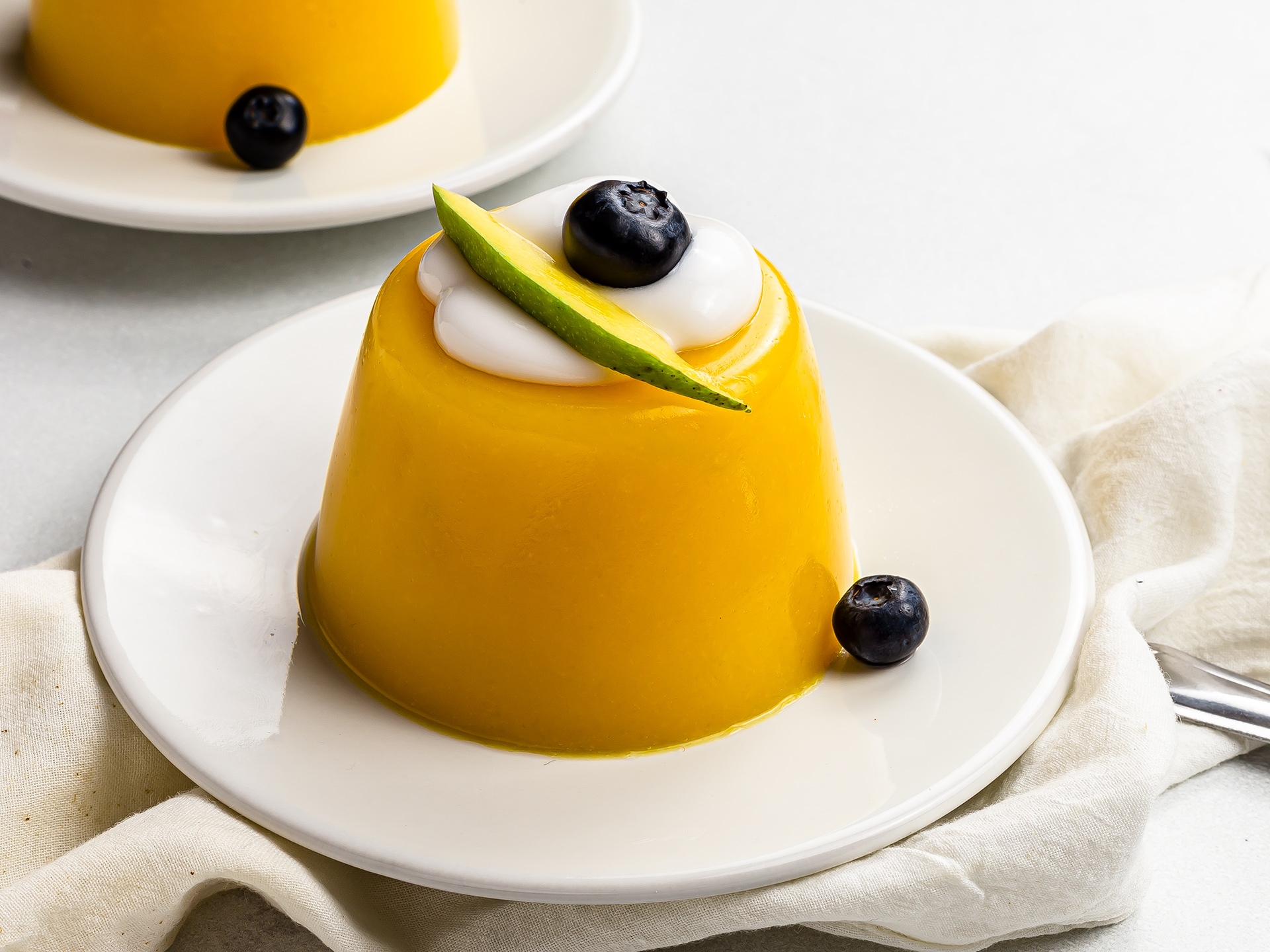Do you want to prepare a fancy dessert but have little time? Our mango jelly recipe comes to the rescue! It's a stress-free treat that takes no more than 10 minutes to put together. And the great news: it's also sugar-free and low in calories, meaning you can enjoy it without guilt.
Our jelly recipe is a healthier, plant-based alternative to the traditional gelatin dessert. How did we do it? We omitted refined sugar and used a combo of blended mango and pineapple juice. Also, we swapped animal-based gelatin with a vegan-friendly alternative, agar-agar powder.
Combine the mango pureé with pineapple juice in a pot, tip in the agar-agar, and let the mixture bubble for 5 minutes. Then, simply pour it into ramekins and let the jelly set in the fridge. Once ready, flip it onto a plate have fun garnishing it with fruit, nuts, yogurt, chocolate, or ice cream. You can turn this treat into a glamorous dessert perfect for a special occasion.
Using pureed mango instead of mango juice helps cut down on sugars while adding fibres and bulk to the jelly. Make sure you're using very ripe mangos as they'll taste sweeter. But don't worry if they're not super ripe; pineapple juice will balance out any bitterness while adding a lovely tropical flavour to the jelly.
In our previous recipes, we often used vegan gelatine to thicken the jelly, but we wanted to experiment with agar-agar this time. And we got excellent results! This natural gelling agent is derived from red algae and is commonly found as powder or flakes. It's often used to prepare desserts like puddings, mousses, ice creams, and cheesecakes.
Ok, now it's time to get your pudding moulds ready and prepare a delicious mango dessert, perfect for celebrating the summer season. Enjoy!
And if you're in the mood for more exotic jelly recipes, we think you'll love this butterfly pea blue jelly and green pandan jelly. Give them a go!
Ingredients
| Ripe Mango (peeled weight) | 400 g |
| Pineapple Juice | 400 mL |
| Agar-Agar Powder | 8 g |
Step 1
Make sure you're using very ripe mangos as they will blend better and taste much sweeter. Most of the skin should look red-orange, and the fruit should feel quite soft to the touch.
Peel the mango, remove the stone, and cut it into chunks.
Then, add it to a food processor along with pineapple juice and blitz all until smooth.
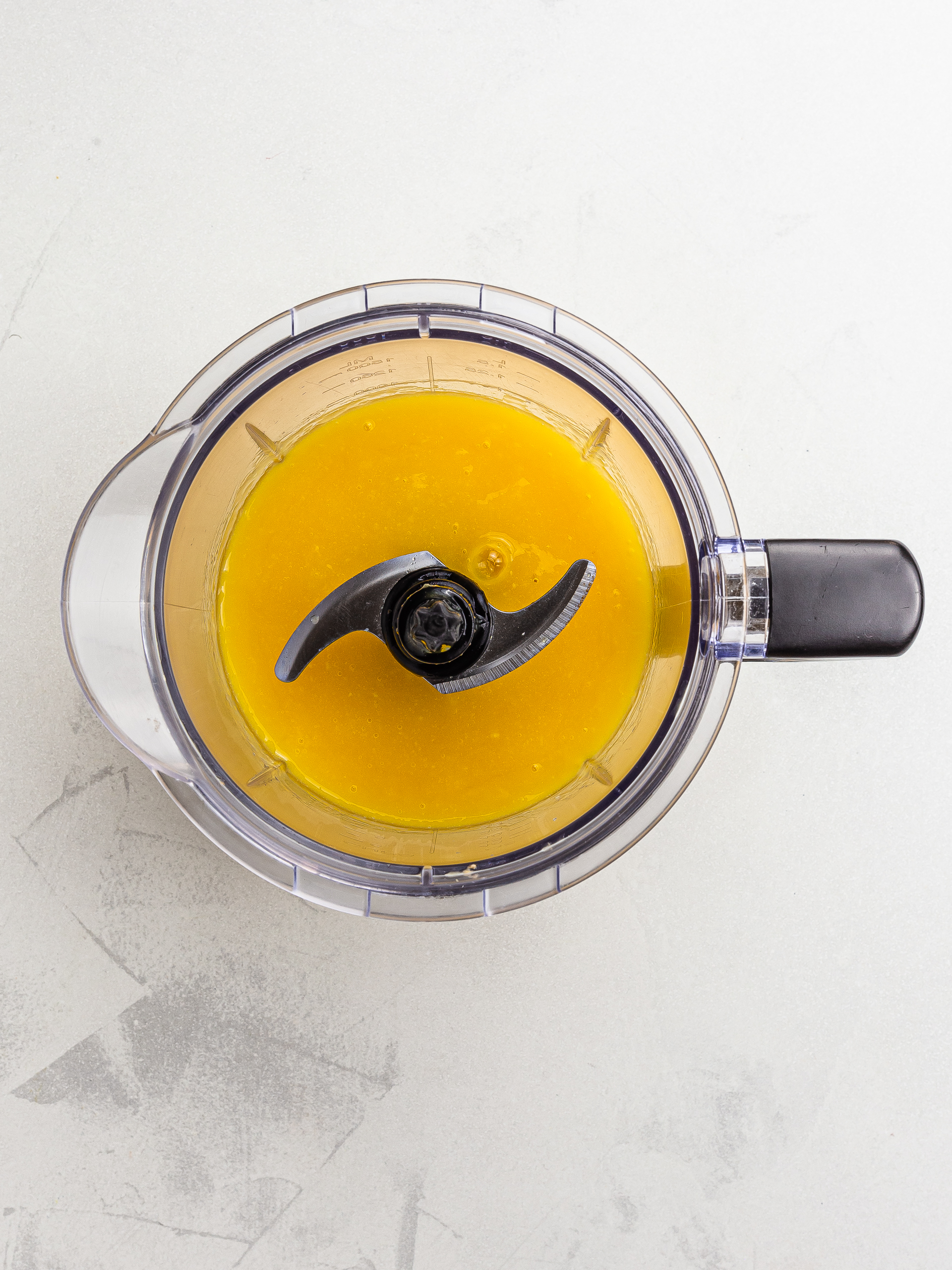
Step 2
Next, transfer the mango pureé to a pot.
Tip in the agar-agar powder a bit at a time to avoid lumps and stir well with a whisker or spoon until it's completely dissolved.
Make sure you weigh the agar-agar accurately, as even a small amount can affect the final result.
Bring the mango mix to a boil and simmer it over low heat for 5 minutes while stirring.
During this time, the agar-agar will get activated.
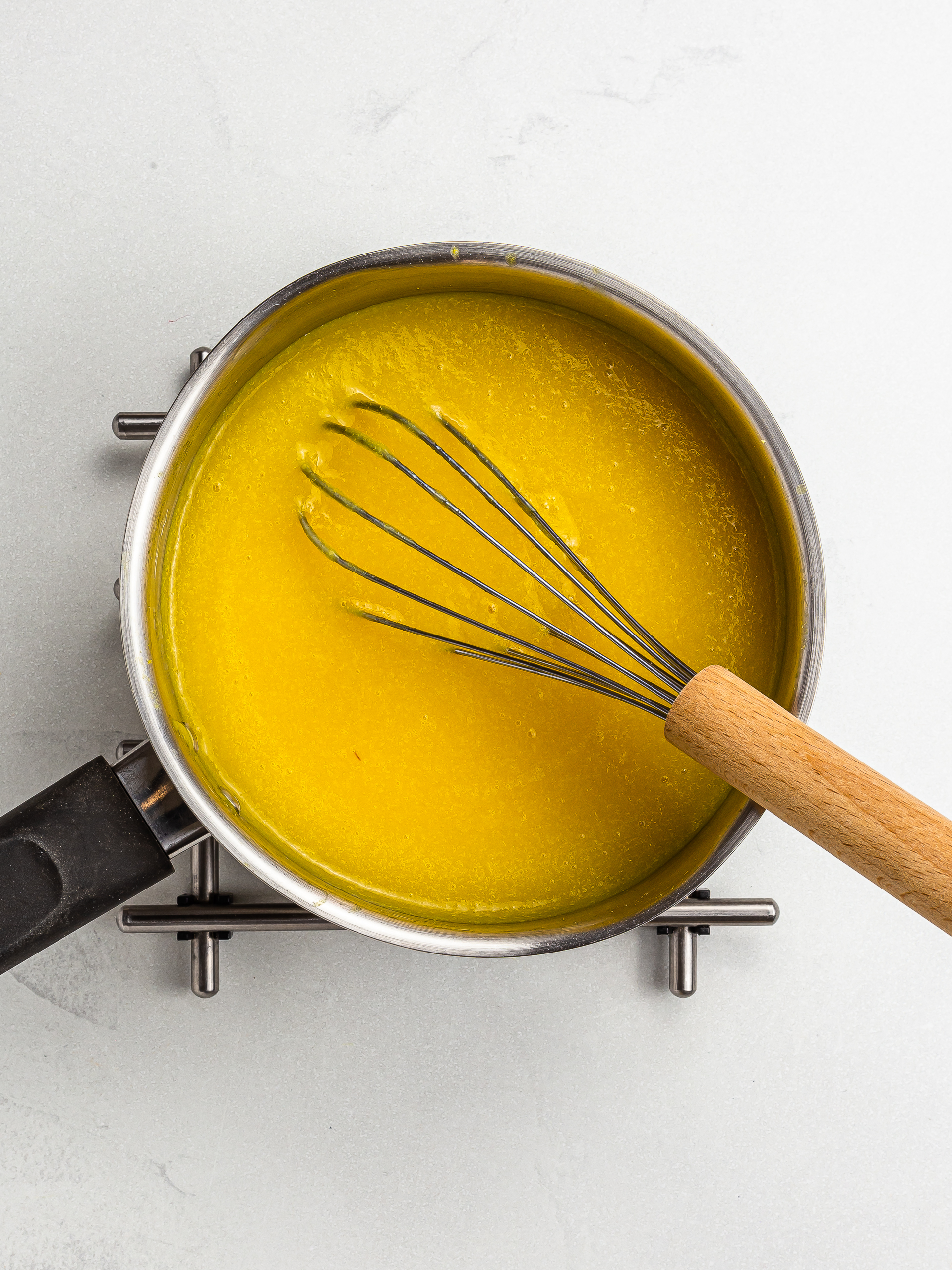
Step 3
Now, divide the mango mixture among pudding tins or silicone moulds, filling them to the top.
Allow the jellies to cool down at room temperature for 10 minutes, and then let them harden in the fridge for 25 more minutes.
The surface of the pudding should feel set and slightly bouncy when poked.
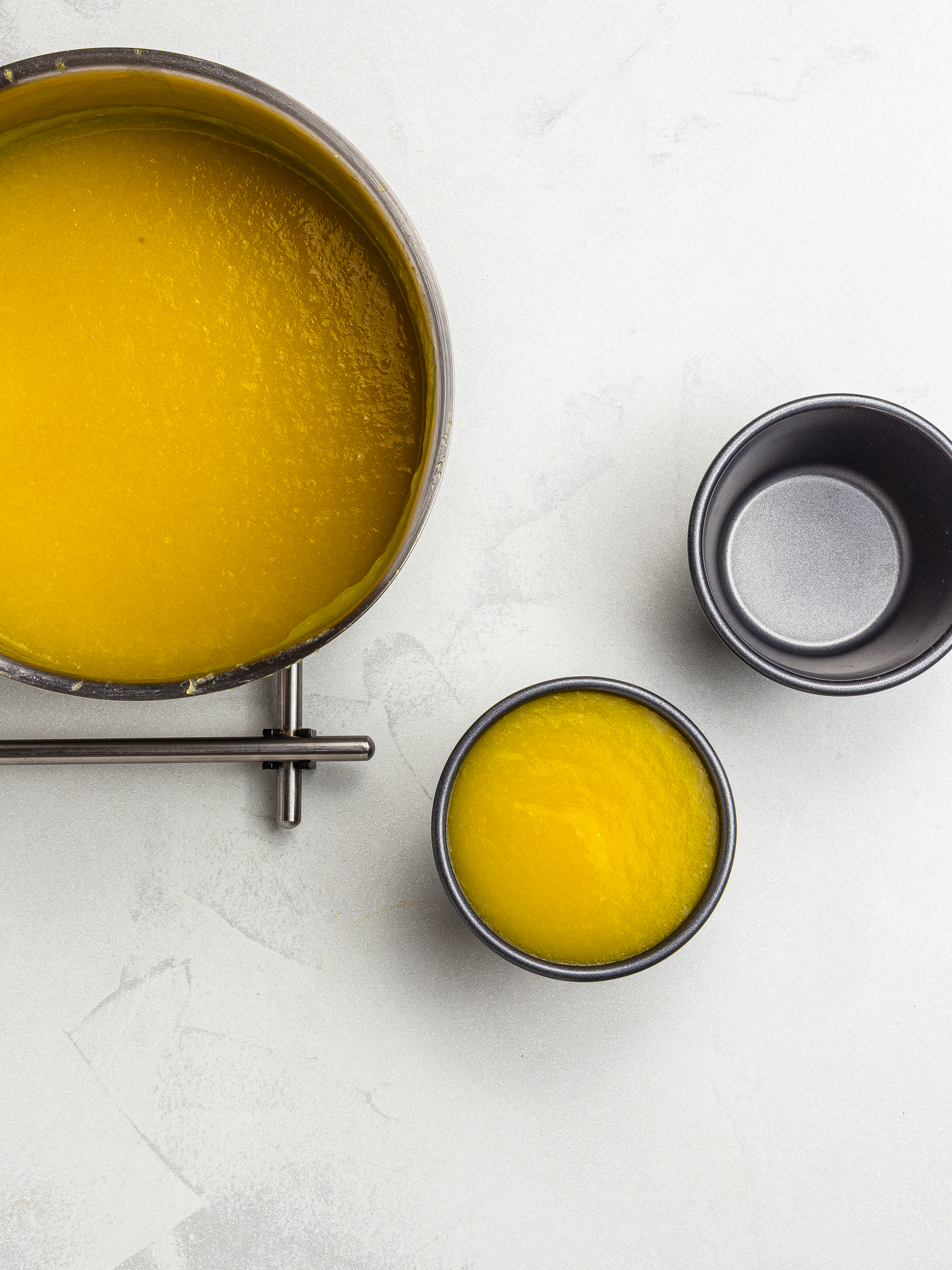
Step 4
Finally, loosen the jellies up from their moulds. If you are not using silicone moulds, run a silicone spatula along the edges and push it all the way down to the bottom to create an air pocket.
Then, flip the mango jelly onto a dessert plate and serve.
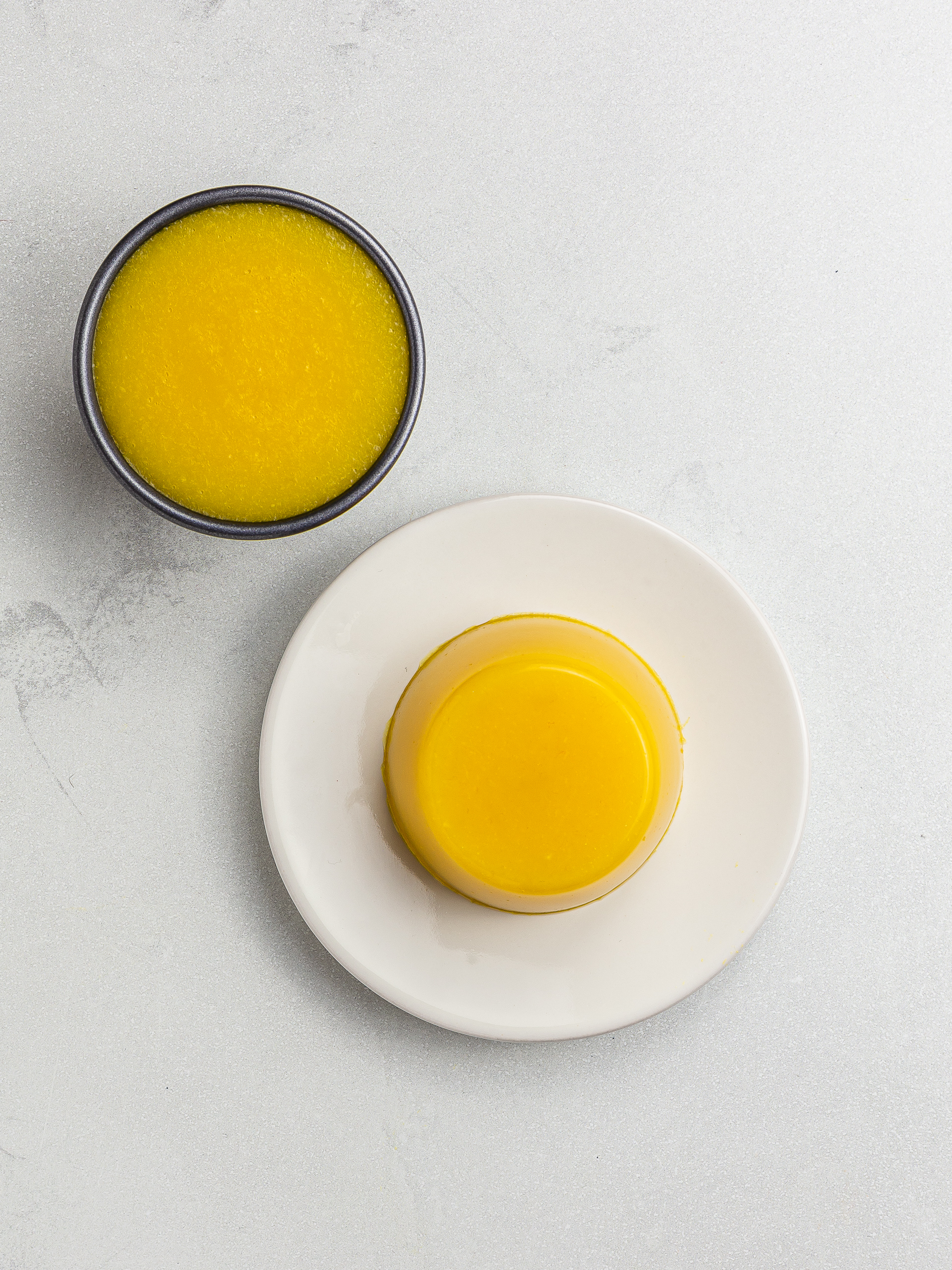
Tips
You can also use muffin tins if you don't have pudding moulds. Alternatively, pour the hot mango jelly into a loaf tin, let it cool down, flip it, and finally slice it into squares or rectangles.
